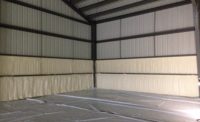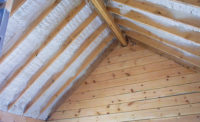We all buy milk, but rarely think much about the process of sourcing it. However, for Chris and Craig Zinke, two dairy men in Arizona, this is on top of their minds. In 2015, the two were looking to build a second, new dairy just outside of Phoenix and were exploring innovative ways to increase the milk production of their animals.
This particular region of the country experiences extreme heat. In fact, the region typically gets 92 days of 100-or-more degree weather per year. This excessive heat is a key concern for those involved in dairy because it can cause heat stress in cows and, in extreme cases, death. It can also decrease milk production dramatically, reducing a dairy’s output and profitability.
Made in the Shade
Many dairies in the western United States provide carport like, outdoor shade structures for their animals. While somewhat beneficial, the resulting shade still leaves the animals largely outdoors and subjected to the negative effects of high heat. The Zinkes wanted their new facility to provide a better solution to the challenges of their region.
They engaged Greg Beath of Lines to Design LLC, a full-time dairy architect based in Colorado, to design the 740,000-square-foot facility. “I designed a low profile, cross ventilated structure that pulls fresh air in on one side and exhausts stale air out of the other side,” says Beath. “High-pressure fogging systems immediately cool the fresh air coming in, keeping the cows comfortable.”
PRIME Metal Buildings provided the large-scale pre-engineered metal building, which encloses 17 acres within three interconnected structures. The Zinkes and Beath selected Lapolla Industries’ high-performance Foam-Lok 4G closed-cell spray polyurethane foam insulation for the structure and Tri-County Insulation dba Boss Insulation completed the insulation installation.
Keeping it Cool
“Spray foam is the only insulation that could have worked in this facility,” says co-owner Craig Zinke. “We have basically created a big igloo cooler and can maintain an indoor temperature of 75 degrees Fahrenheit or less, even while outdoor temperatures rise as high as 120 degrees Fahrenheit.”
The next-generation two-pound closed cell spray foam insulation was applied to the interior walls and the underside of the roof, essentially sealing the structure from the exterior extremes. “With this seal, we have more than doubled the facility’s ability to keep indoor temperatures cool,” adds Beath.
The medium density material is vapor impermeable, protecting the structure from excessive moisture, while providing additional structural strength.
“With the fogging system and misters, as well so many animals under one roof, humidity and temperature maintenance were a key consideration,” says Beath. “The spray foam allows us to reduce the impact that the hot metal building would have on the interior.”
The final touches to the new Zinke Dairy facility are being completed now and it is already home to about 5,000 cows.
“We are the only ones in our region with a facility of this kind,” said Chris Zinke. “In keeping our animals more comfortable, we are protecting our investment and increasing our milk yield.”




















